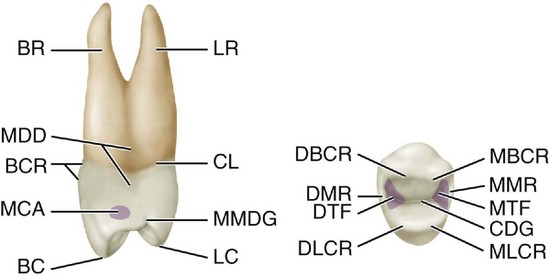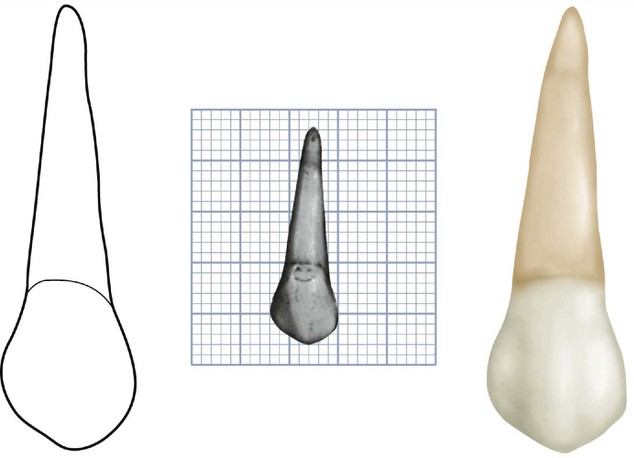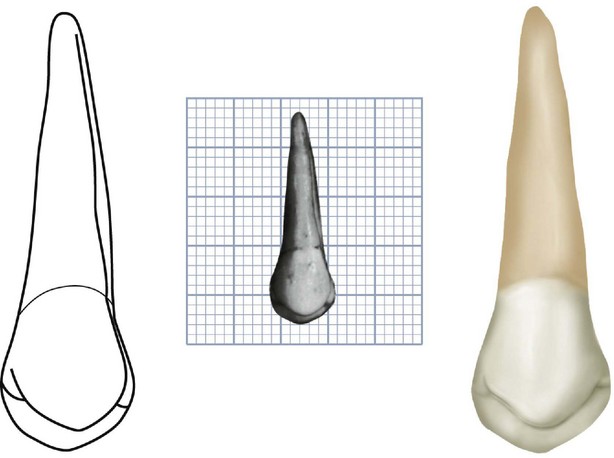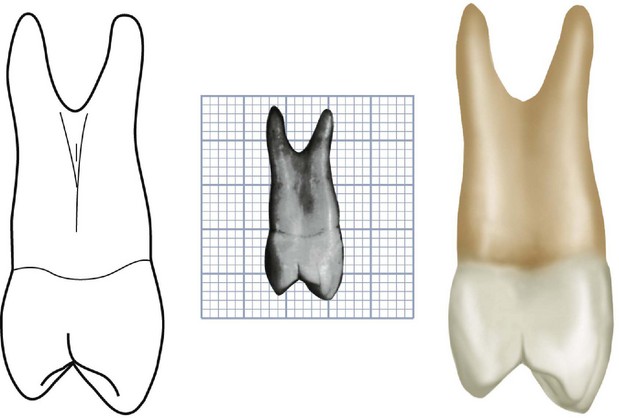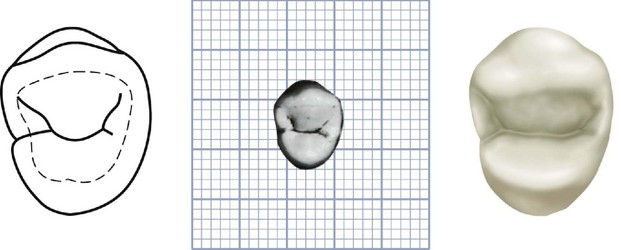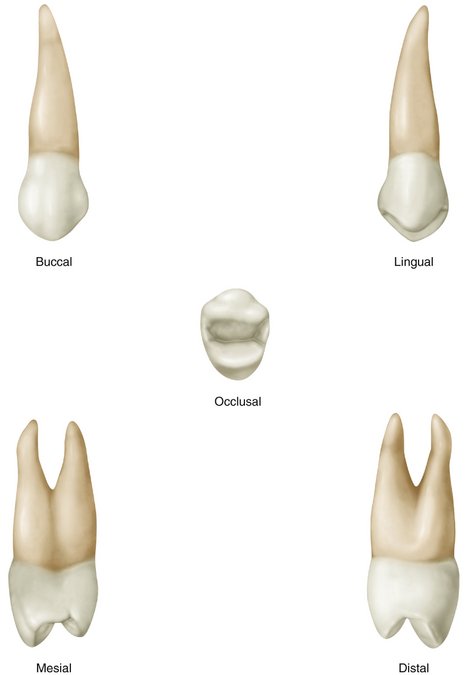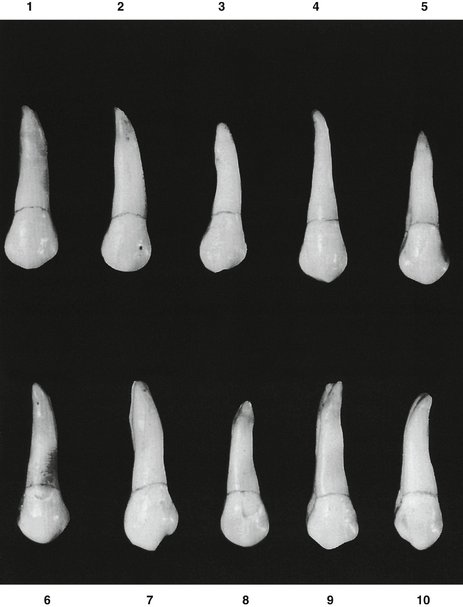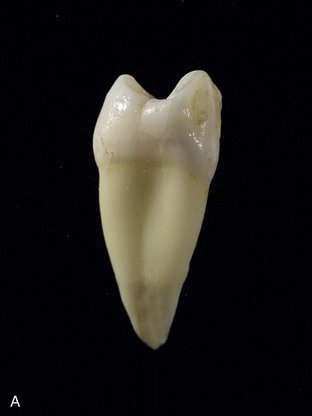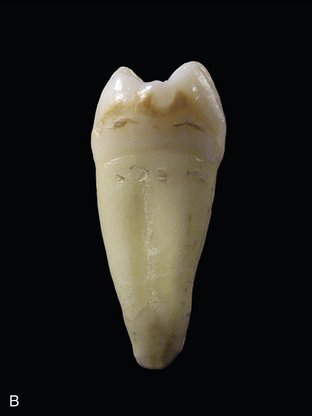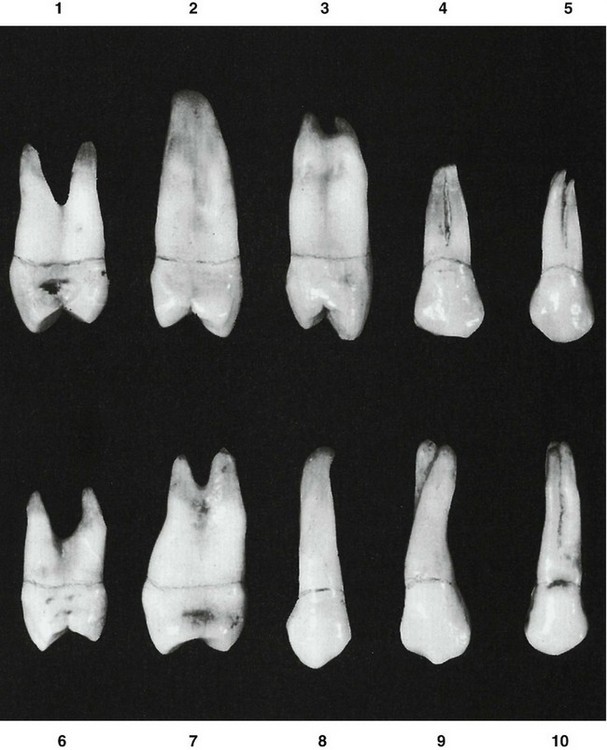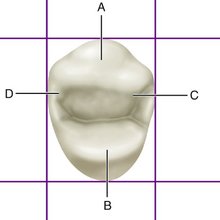9 The Permanent Maxillary Premolars
When premolars have two roots, one is placed buccally and one lingually.
Maxillary First Premolar
Figures 9-1 through 9-16 illustrate the maxillary first premolar from all aspects. The maxillary first premolar has two cusps, a buccal and a lingual, each being sharply defined. The buccal cusp is usually about 1 mm longer than the lingual cusp. The crown is angular, and the buccal line angles are prominent.
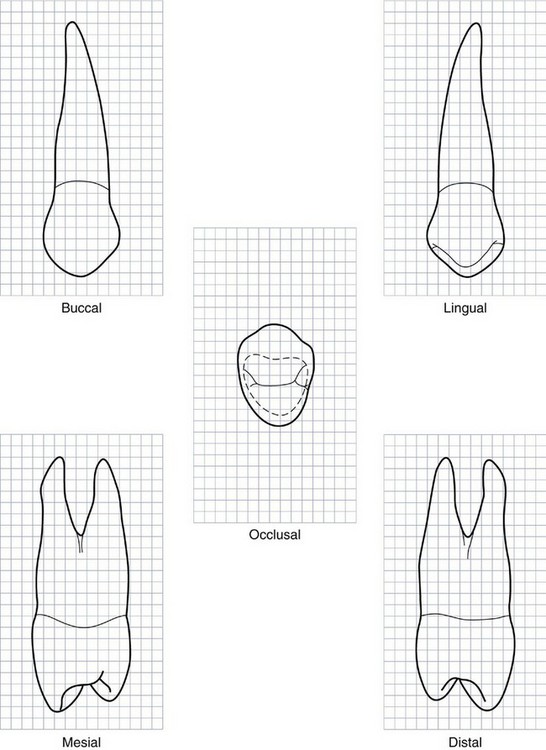
Figure 9-7 Maxillary right first premolar. Graph outlines of five aspects are shown. (Grid = 1 sq mm.)
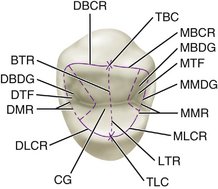
Figure 9-16 Maxillary first premolar, occlusal aspect. TBC, Tip of buccal cusp; MBCR, mesiobuccal cusp ridge; MBDG, mesiobuccal developmental groove; MTF, mesial triangular fossa; MMDG, mesial marginal developmental groove; MMR, mesial marginal ridge; MLCR, mesiolingual cusp ridge; LTR, lingual triangular ridge; TLC, tip of lingual cusp; CG, central groove; DLCR, distolingual cusp ridge; DMR, distal marginal ridge; DTF, distal triangular fossa; DBDG, distobuccal developmental groove; BTR, buccal triangular ridge; DBCR, distobuccal cusp ridge. (Compare with Figure 9-1.)
The crown is shorter than that of the canine by 1.5 to 2 mm on the average (Table 9-1). Although this tooth resembles the canine from the buccal aspect, it differs in that the contact areas mesially and distally are at about the same level. The root is shorter. If the buccal cusp form has not been changed by wear, the mesial slope of the cusp is longer than the distal slope. The opposite arrangement is true of the maxillary canine. Generally, the first premolar is not as wide in a mesiodistal direction as the canine.
Most maxillary first premolars have two roots (see Figure 9-10) and two pulp canals. When only one root is present, two pulp canals are usually found anyway.
DETAILED DESCRIPTION OF THE MAXILLARY FIRST PREMOLAR FROM ALL ASPECTS
Buccal Aspect
From the buccal aspect, the crown is roughly trapezoidal (see Figure 4-16, C). The crown exhibits little curvature at the cervical line. The crest of curvature of the cervical line buccally is near the center of the root buccally (see Figure 9-2 and Figures 9-7 through 9-9).
The mesial slope of the buccal cusp is rather straight and longer than the distal slope, which is shorter and more curved. This arrangement places the tip of the buccal cusp distal to a line bisecting the buccal surface of the crown. The mesial slope of the buccal cusp is sometimes notched; in other instances, a concave outline is noted at this point (see Figure 9-9, 7, 9, and 10).
Stay updated, free dental videos. Join our Telegram channel

VIDEdental - Online dental courses


